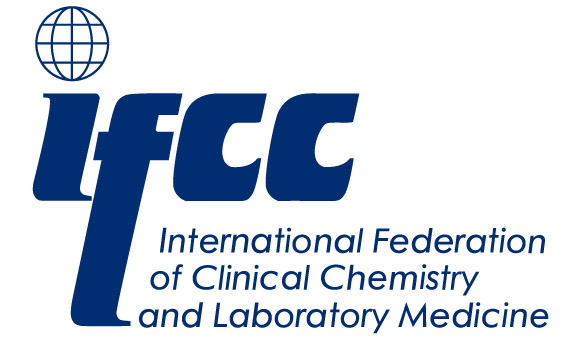Every year, laboratorians face the task of reviewing and choosing quality indicators (QIs) for their labs. Given time pressures, it might be tempting to simply continue monitoring the same QIs for another year. However, thoughtful review and decisions about QIs build the framework for strategic quality initiatives for the upcoming year, and are well worth the effort.
QIs—tools that support objective monitoring of errors—are an integral component of a laboratory’s quality management program. Effective QIs foster continuous improvement by helping labs identify potential quality concerns early-on. Robust QIs also help stakeholders make informed decisions about how to prevent or minimize future errors. In the United States, laboratories are required to assess quality performance throughout the total testing process (preanalytic, analytic, postanalytic), but choosing QIs is at the discretion of laboratorians. Laboratorians need to give thoughtful consideration to selecting and developing meaningful QIs that promote continuous quality improvement and safe patient care.
Choosing Quality Indicators
Monitoring errors to assess quality in all laboratory processes is ideal, though impractical. Instead, labs will do well to choose a few QIs that meet the goals and challenges of each laboratory’s unique setting.
Important questions to ask when selecting candidate QIs are: what specific testing processes should be monitored, and why? Lab QIs commonly focus on minimizing the frequency of errors in processes that are high-risk for patient harm, have known vulnerability or ongoing problems that may result in high-frequency of error, or involve high-cost processes. Reviewing evidence-based literature and engaging experts helps identify candidate QIs.
Another good approach to prioritizing QIs specific to a laboratory’s unique setting is to conduct a risk assessment that identifies sources of error within testing processes. Such an assessment typically involves evaluating the probability of error together with potential negative impact on patient care. This helps identify high-risk testing processes that warrant monitoring.
Next, leaders should build consensus and buy-in among stakeholders on candidate QIs. Successful QIs that support continuous improvement endeavors often involve several inter-disciplinary stakeholders. Selecting candidate QIs with quality goals that match overarching institutional strategic goals (e.g. safety), best practice recommendations, or regulatory requirements motivates stakeholders and helps establish consensus.
After selecting candidate QIs, laboratorians should consider several factors to ensure that any associated data collection is feasible and information gathered is meaningful:
- Understanding the process of data collection while considering available resources provides insight into whether analyzing a particular QI metric is practical. Describe what data needs to be captured, data source (e.g. electronic capture, manual audit), frequency of data collection, and individuals responsible for collecting data.
- Defining the scope and limitations helps identify key stakeholders and highlights variables that might dilute the utility of information. Describe the range (e.g. test, location, patient population) for data collection and any exclusions or limitations in capturing select data.
- Setting target thresholds highlights quality goals and underscores what the lab is trying to accomplish. Designate well-defined target thresholds (i.e. acceptable limits) that meet institution performance goals and align with benchmark data, if available.
- Identifying optimal presentation of data ensures that this information will be understood clearly. Illustrate QI information in a clear format (e.g. graphics, charts, tables) that incorporates target thresholds and enables performance trending over time.
- Defining an action plan supports objective decision-making and communicates expectations for each stakeholder. Importantly, describe the frequency for QI evaluation and steps that should be taken if the lab exceeds target thresholds, when/if target thresholds should be modified, when/if to reduce or stop monitoring, and individuals responsible for each action.
Collectively, these factors help laboratorians choose effective QIs that guide continuous improvement on the way to achieving quality goals.
Retiring Quality Indicators
Using QIs to assess quality in dynamic laboratory practices requires periodic review of whether a QI should still be monitored as is, modified, or retired.
Frequently, laboratorians collect data and monitor the same QIs year-after-year that demonstrate acceptable results suggestive of highly stable quality practices. Settling for QIs that provide minimal actionable information wastes time, energy, and money. However, taking a step back to reevaluate whether a monitored testing process remains high-risk helps clarify whether a QI should be kept or retired.
If a lab decides to continue monitoring the QI, re-defining quality goals with more stringent target thresholds and an accompanying action plan still supports continuous quality improvement. Alternatively, reducing how frequently the lab monitors a QI with known stable results might be sufficient to detect any decline in quality overtime. Labs should expect to retire QIs periodically so that they adapt to changing laboratory quality goals and practices. This enables them to focus on new QIs that support continuous quality improvement over time.
Author: Nichole Korpi-Steiner, PhD, DABCC, FACB // Date: FEB.1.2016 //
Source: AACC’s Clinical Laboratory News
Nichole Korpi-Steiner, PhD, DABCC, FACB, is assistant professor of pathology and laboratory medicine, director of point-of-care testing, and associate director of the core laboratory at McLendon Clinical Laboratories at the University of North Carolina at Chapel Hill. +Email: Nichole.Korpi-Steiner@unchealth.unc.edu




















































